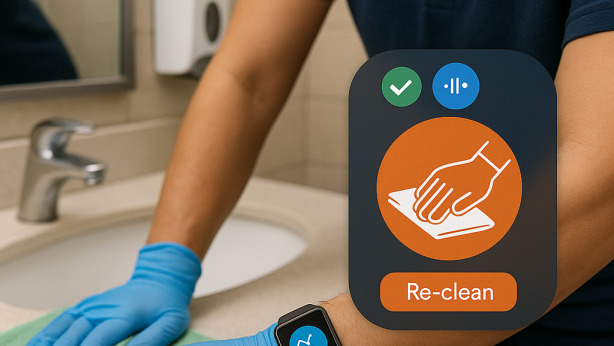IMPLANTABLE MEDICAL DEVICE WITH SENSING AND COMMUNICATION FUNCTIONALITY UTILIZING A SUBSTRATE ANTENNA

Invented by Salant; Kimberly
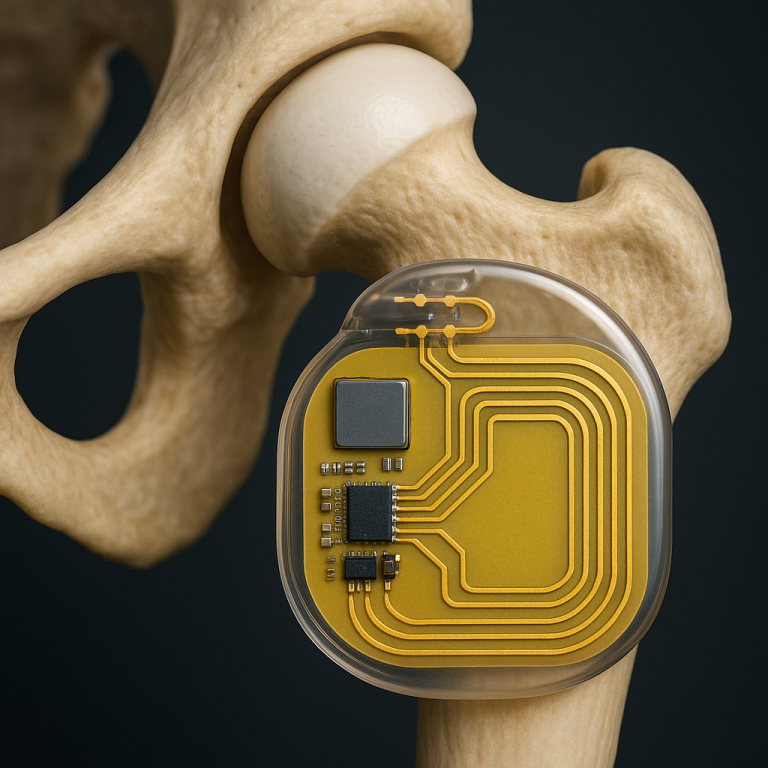
Medical implants are changing how doctors and patients manage health problems, especially for people who need joint replacements or spinal surgery. Today, we will explore a new kind of implant system based on a recent patent application. This system uses sensors, smart electronics, and special antennas to track how implants work inside the body. In this article, we’ll break down why this matters, how the science works, and what makes this invention special.
Background and Market Context
Let’s start by looking at why this new implant system is important. Many people get joint replacements every year, such as hips, knees, and shoulders. Some also need spinal implants. These implants help people move better and live without pain. But after surgery, problems can happen. Sometimes the implant moves, gets loose, or causes pain. Right now, the only way to check on implants is by visiting the doctor, getting X-rays, or having scans like MRI or CT. These methods are not always easy, quick, or able to catch small problems early.
Doctors want to know if an implant is working as it should, but it is hard to see what is happening inside the body. Patients might skip follow-up visits, or only come in if there is pain. Sometimes, by the time a problem is found, it’s already serious. This leads to more surgeries, longer healing times, and more costs.
External devices, like smart bands or wearable sensors, are not very helpful here. They sit outside the body and can’t really “see” what’s happening with the implant. Muscles, skin, and fat block the signals. These devices also don’t stay in the same place, so their readings are not always correct.
For all these reasons, there is a big need for better ways to watch implants inside the body. The market for smart implants is growing fast. People want technology that can alert doctors to problems early, track healing, and help make better choices after surgery. Hospitals and insurance companies also support these ideas, because they can lead to better care and lower costs. This is where the new implantable system comes in.
This new system is designed to fit inside the body, right where the implant is placed. It uses built-in sensors to watch for problems, and it can send out data to the doctor or patient’s devices wirelessly. With this, both patients and doctors get a clearer picture of how the implant is doing, day by day. This is a big step forward for patient care and for the whole medical device industry.
Scientific Rationale and Prior Art
To understand why this new implant system is special, let’s look at what has been done before and the science behind it.
Doctors and engineers have tried many ways to check on implants. The most common is using X-rays, CT scans, or MRI. These tools can see bones and metal parts, but they can’t always tell if the implant is loose, worn, or if there is a small infection. Sometimes, by the time something shows up on a scan, it is too late to fix it easily.
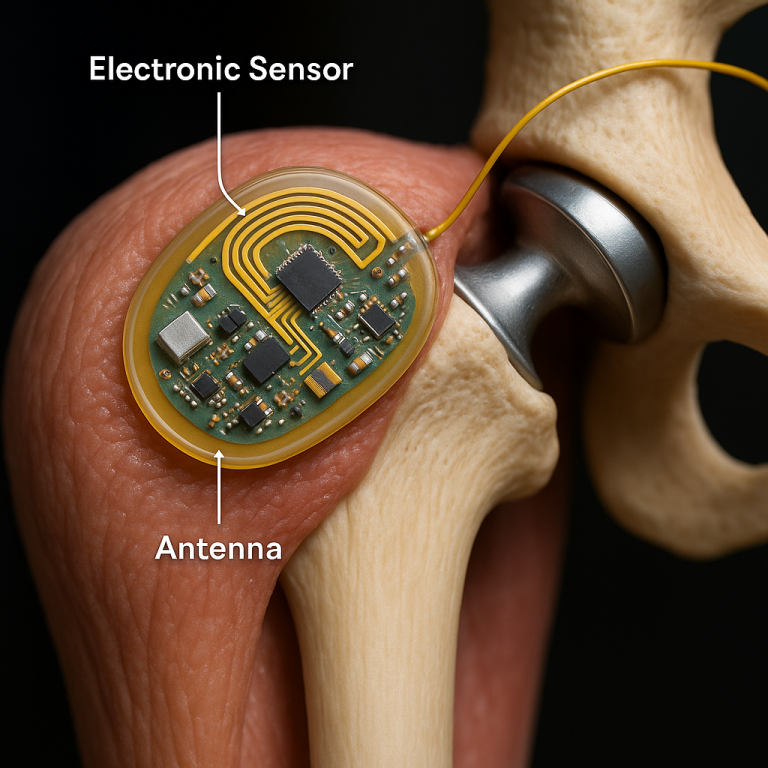
Some have tried using sensors outside the body to measure movement or pressure, but these do not work well for implants. The body’s tissues block signals, and the readings are not reliable. Other attempts have used wires or bulky electronics, but these are hard to fit inside a joint or bone, and can cause their own problems.
Wireless medical implants are not brand new. There are pacemakers and other devices that can send information out of the body. But joints and spines are different. They move a lot, and there is not much room for extra parts. The signals need to travel through thick bone and muscle, which absorb and weaken them. Also, the inside of the body is a very tough place for electronics—everything must be safe, last a long time, and not cause harm.
Until now, antennas inside the body have been the weak point. They are often too big, not strong enough, or do not work well with all the metal parts around them. Some designs try to use simple wire loops or coils, but these only work for short distances and can be blocked by the metal of the implant or body tissues. Others use flat antennas, but they may not send signals very far, especially at the low power needed for safe medical use.
The science behind wireless signals in the body is tricky. Radio waves—like those used in Wi-Fi or Bluetooth—do not travel easily through water, fat, or bone. The best frequencies for getting signals out of the body are the medical device radio bands (like the MICS band, around 400 MHz) and the ISM band (like 2.4 GHz, which is also used for Bluetooth). But antennas that work well at these frequencies are usually too big to fit inside an implant.
Previous inventions tried to solve these problems, but with trade-offs. Some made the antenna smaller, but lost signal strength. Others tried to make the antenna stronger, but it became too big to fit. Some made antennas that could only send signals in one band, not both. And not many designs could be used in all types of joints or spinal implants.
This patent application builds on all that past work and tries a new approach. It uses special shapes and layouts for the antenna, new materials that are safe for the body, and clever ways to boost the signal without making the device too large. It also adds sensors, smart chips, and wireless parts in a way that fits inside real implants—like hips, knees, and spinal cages.
By understanding the scientific problems—tiny spaces, hard-to-penetrate body tissues, and the need for safe, long-lasting parts—this invention sets out to make a better solution. It aims to give clear, strong signals from deep inside the body, in a package small enough to fit inside real medical devices.
Invention Description and Key Innovations
Now let’s look closely at what this new implant system is and what makes it different.
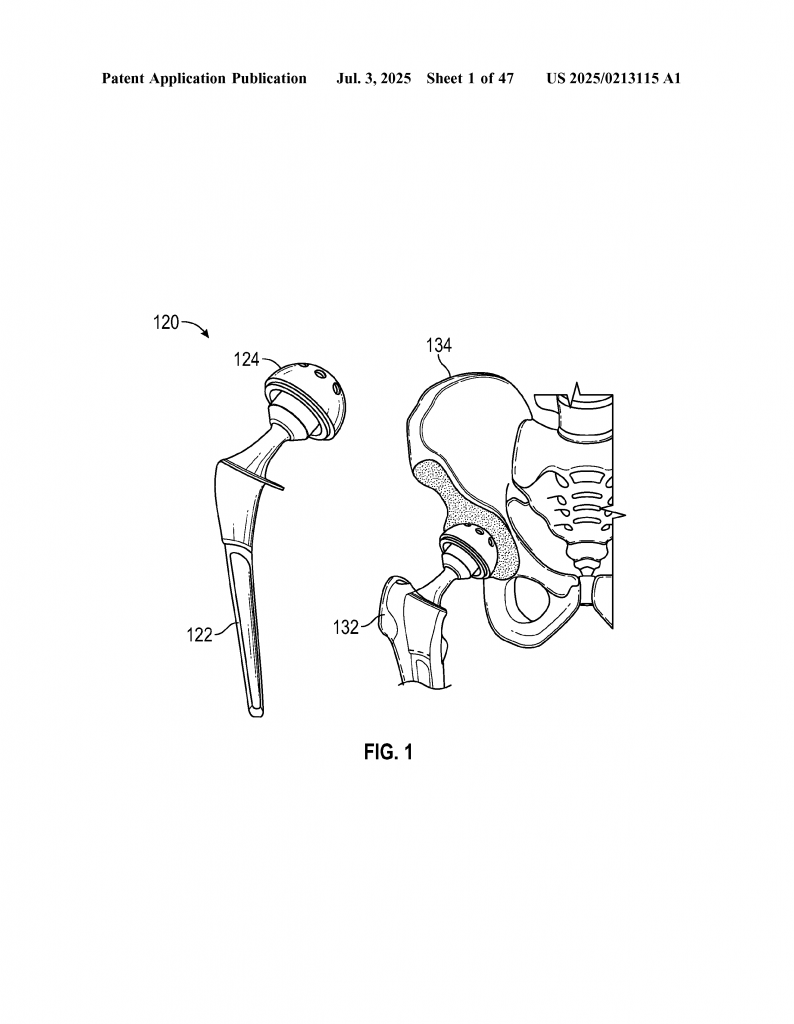
The system is made to be put inside a body part—like a joint or the spine. It has several main parts: sensors, smart chips (processors), a way to talk to the outside world (communication circuitry), and a special antenna. All these are put together in a way that is safe and small enough to fit inside the implant.
1. Sensors and Electronics
The heart of the system is the sensor. This can be an accelerometer (which measures movement), a gyroscope (which measures rotation), or other types of sensors for pressure, temperature, or even chemical changes. These sensors keep track of how the implant is moving, how much force it is under, or if there are signs of trouble.
A smart chip, or processor, collects the data from the sensor. It can store the data, process it, and decide when to send it out. This keeps power use low and makes sure only important information is sent. The processor can also handle commands sent from outside, like turning on, changing how often it checks the sensor, or sending back special data.
A battery powers everything. In some cases, there is a way to recharge the battery wirelessly.
2. Antenna Design
The antenna is one of the biggest innovations in this system. It is not a simple wire or coil. Instead, it is made of many thin strips of metal—called conductive traces—laid out in special patterns on a flat, flexible piece called a substrate. This substrate is made from materials that are safe inside the body, such as liquid crystal polymer, polyimide, or polyamide.
The traces can be printed or painted onto the substrate, which makes them easy to shape in many ways. Some patterns look like rings, petals, or zig-zags. These shapes are not just for looks—they help the antenna work in different radio bands and send signals out through skin, muscle, and bone.
A unique part of this design is using two rings of traces—one inside the other. They can be connected together, and the way the petals or shapes are spaced affects how well the antenna works. By rounding the corners or changing the distance between parts, the inventors can tune the antenna to get the strongest signal right where it’s needed.
Sometimes, a small extra piece called a stub is added. Changing the length or shape of this stub helps the antenna work better in certain frequencies. The traces can also be wrapped around a spacer—a small support piece that separates the antenna from the electronics. This helps the antenna send out a better signal, even when it’s close to metal parts.
The antenna is designed to work in at least two key radio bands: the MICS band (around 400 MHz) and the ISM band (around 2.4 GHz). This means it can send and receive signals over a short distance (like from inside the body to a phone or base station), and wake up or sleep to save power.
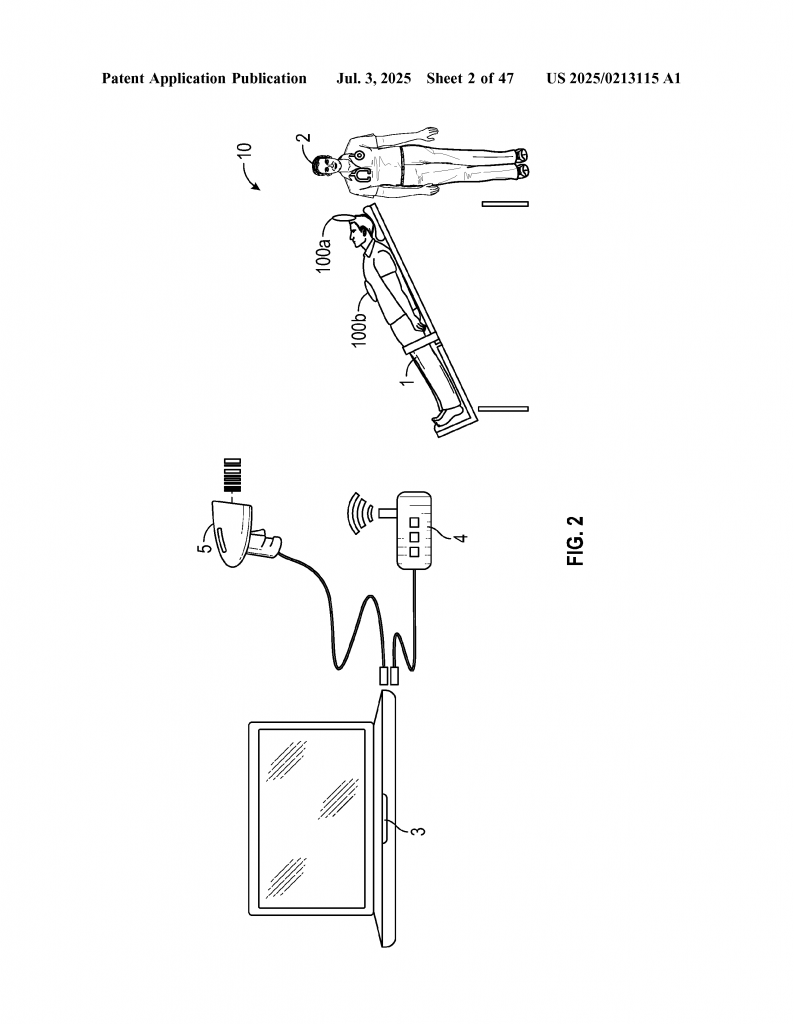
3. Covers, Spacers, and Safety
To keep everything safe, the antenna and electronics are enclosed in a cover made from a strong, body-safe plastic like PEEK. The cover can be round, flat, or shaped to fit the space inside the implant. The cover protects the antenna from damage and keeps body fluids away from the electronics.
The spacer keeps the antenna just the right distance from the rest of the device and any metal parts. This helps the signal stay strong and makes the antenna work better in the body. Sometimes, extra traces are wrapped around the spacer to boost the signal further.
4. Flexible and Modular Design
This system is made to fit many types of implants—hips, knees, shoulders, elbows, and the spine. The antenna can be shaped and sized to fit different spaces. It can also be made in layers, with traces on both the top and bottom of the substrate, or even stacked up for more power.
The electronics are set up to use as little power as possible. Most of the time, they “sleep” until they get a special signal, then they wake up to collect and send data. This helps the battery last a long time, so patients don’t need more surgery just to change a battery.
All of the materials used are chosen to be safe in the body, so there is no risk of irritation, infection, or bad reactions. The system is sealed up tight, so nothing leaks out or gets in.
5. Communication and Data Flow
The implant sends data wirelessly to a receiver—this could be a base station in a doctor’s office, a home device, or even a smart phone. The system can use different wireless standards, like MICS, ISM, or Bluetooth. The data might be simple, like “the implant is OK,” or more detailed, like movement patterns, signs of loosening, or changes in pressure.
Doctors can also send commands back to the implant—like changing how often it checks the sensor, updating settings, or telling it to send back special data. The system can even be linked to cloud services, so data can be stored, shared, or analyzed over time.
6. Real-World Use
This system can be built into a hip or knee implant, or made as a cartridge that clips into a spinal cage. It can track how well the joint is moving, if the implant is loose or worn, or if something is wrong. The sensors might notice tiny changes long before they turn into big problems. Doctors can monitor healing, check for signs of infection, or see if the patient is moving as they should.
If something changes, the system can alert the patient or doctor, so they can act early. This means fewer surprises, faster healing, and better results.
Key Innovations Summed Up:
– The use of printed or painted conductive traces in complex patterns on a biocompatible substrate for the antenna.
– Special shapes (petals, rings, stubs, zig-zags) to tune the antenna for strong signals at medical frequencies.
– Modular design that fits many types of implants and body parts.
– Smart electronics and sensors for real-time monitoring.
– Power-saving modes and wireless communication.
– Safe, strong materials and sealed covers to protect the device and the patient.
Conclusion
The new implantable system described in this patent is a big step forward for medical implants. It combines smart sensors, clever electronics, and a unique antenna design—all inside a safe, small package. This system can watch implants closely, send out early warnings, and help patients and doctors make better decisions.
By solving the hard problems of wireless signals in the body, fitting electronics into tiny spaces, and making everything safe and long-lasting, this invention opens the door to a new era of smart healthcare. For patients, it means more peace of mind. For doctors, it means better tools to help people heal. For the medical industry, it sets a new standard for what intelligent implants can do.
If you are developing medical devices, thinking about new ways to track health, or looking for ways to make patient care safer and smarter, this patent offers a roadmap to the future. The key is in the details—special shapes, smart chips, and safe materials—all working together to keep people healthy from the inside out.
Click here https://ppubs.uspto.gov/pubwebapp/ and search 20250213115.

